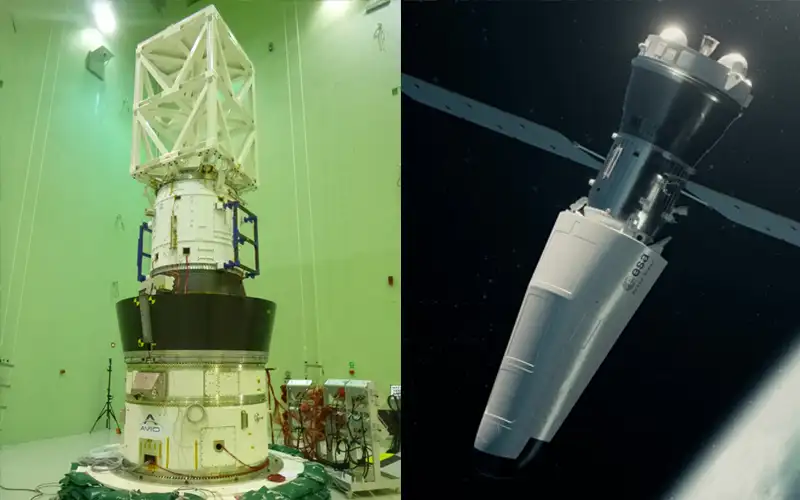
The development of the European Space Agency’s reusable Space Rider vehicle has reached an important milestone, with a key component successfully completing a series of mechanical tests to ensure it can withstand the rigours of a rocket launch.
Space Rider consists of two main components: the reusable Re-entry Module and the expandable Service Module. The Service Module, which is being developed by Avio, is essentially a modified Vega C AVUM+ upper stage, with the AVUM Life Extension Kit (ALEK) bolted on top. The ALEK element will generate power for the vehicle, and features deployable solar wings developed by Leonardo.
On 10 April, ESA announced that the primary structure of the ALEK element, which was manufactured by Beyond Gravity for Avio, had successfully completed its Upper Composite Mechanics (UCMEC) system qualification test campaign. The testing was conducted at the agency’s ESTEC facility in the Netherlands and involved exposing the structure to the vibration, acoustic, and shock conditions a payload experiences during launch. A positive result confirms that the ALEK structure can withstand the journey into space atop a Vega C rocket.
The ALEK structure will now be shipped back to Avio’s facility in Colleferro, Italy, where the company will begin integrating key flight systems. According to Avio, the next major milestone in the Service Module’s development is the qualification of its avionics architecture, which will take place at the Colleferro facility.
While Avio continues the development of the Service Module, ESA and Thales Alenia Space, the prime contractor for the Re-entry Module, are working toward a key drop test later this year. The test will focus on evaluating the vehicle’s recovery system using a full-size Re-entry Module model. It will validate the parasail’s ability to slow the vehicle’s descent and the control system’s ability to ensure a precise landing within a designated recovery zone.
ESA is currently targeting no earlier than 2027 for the inaugural flight of Space Rider, which will be launched aboard a Vega C rocket with its upgraded P160C booster.




